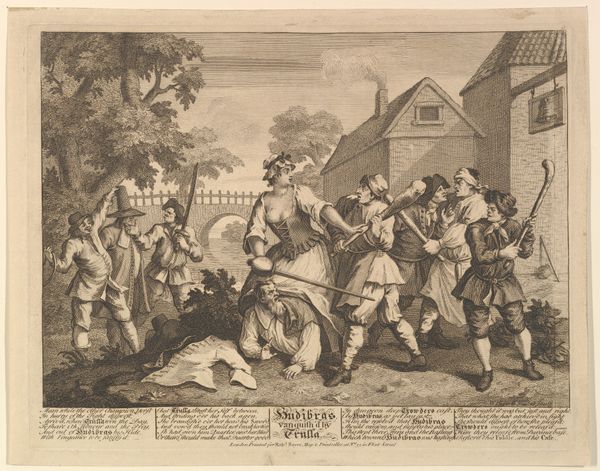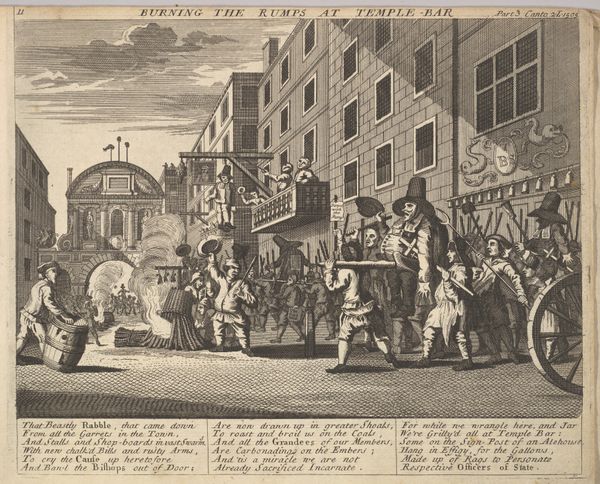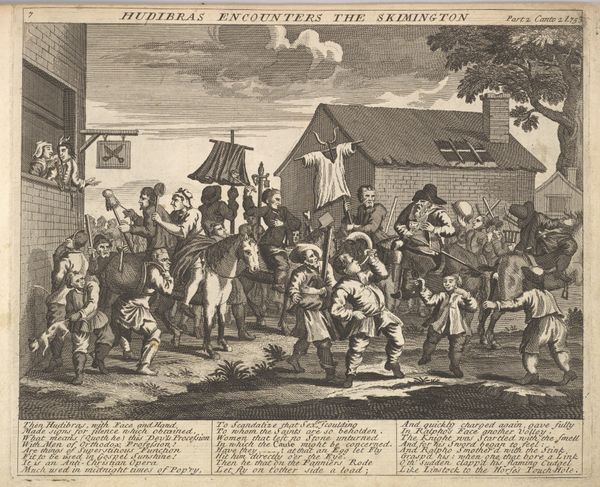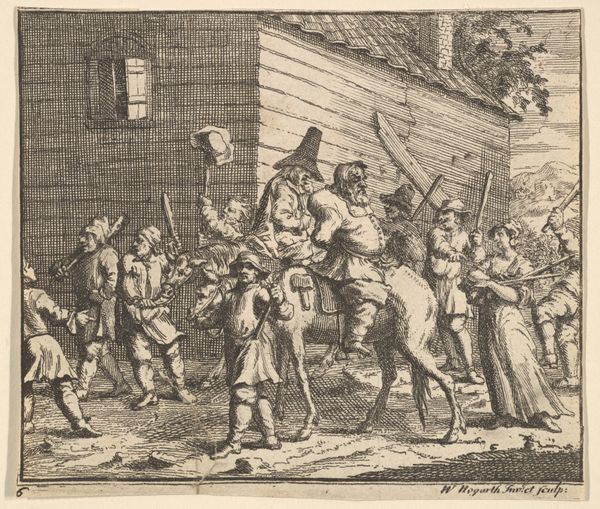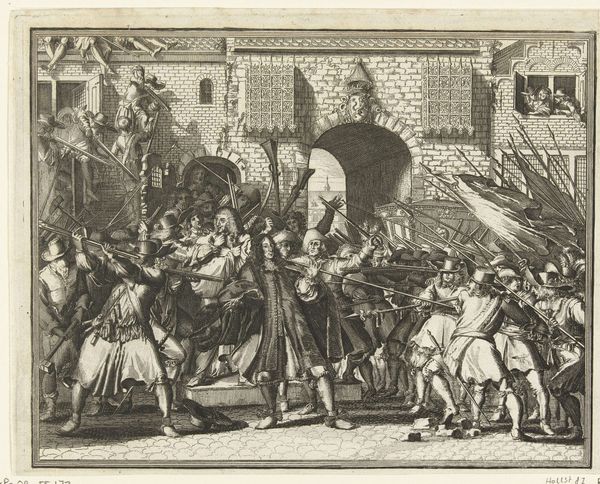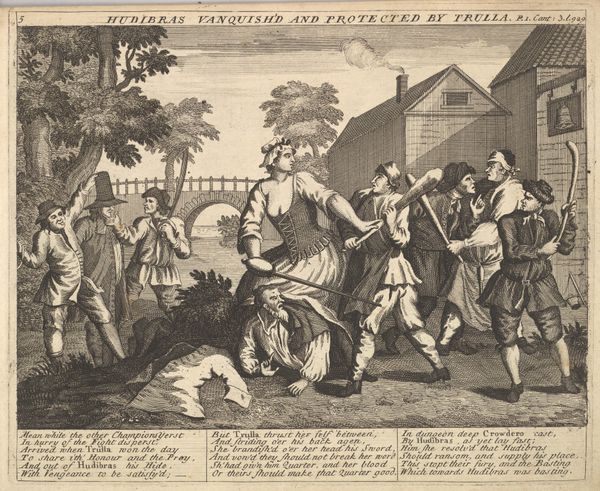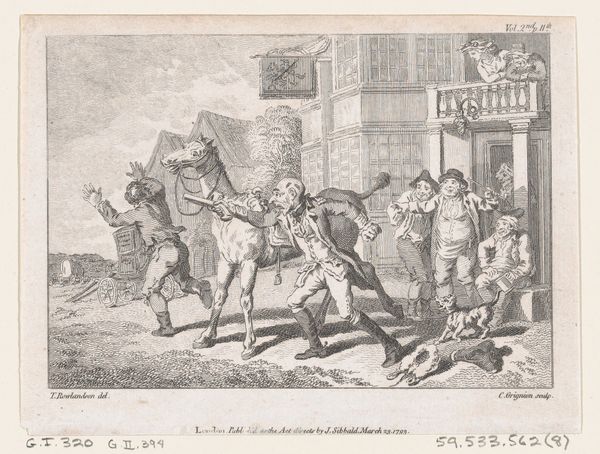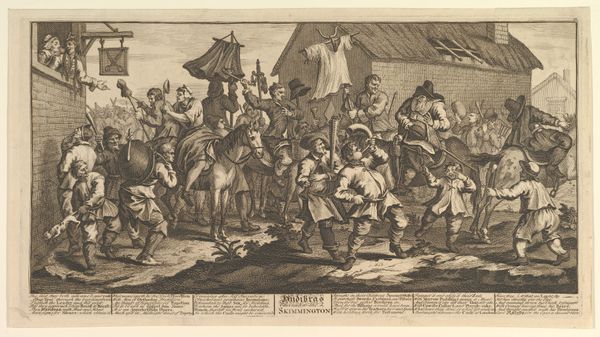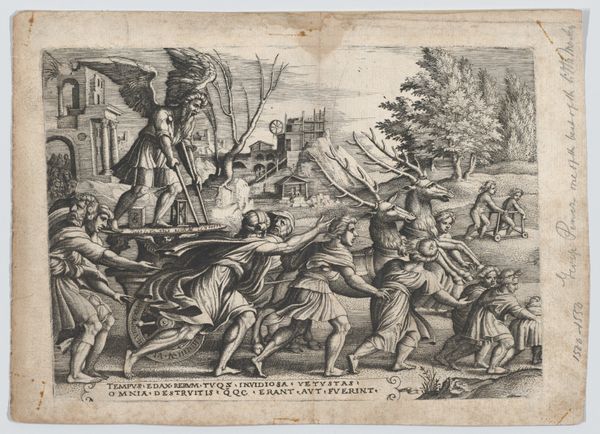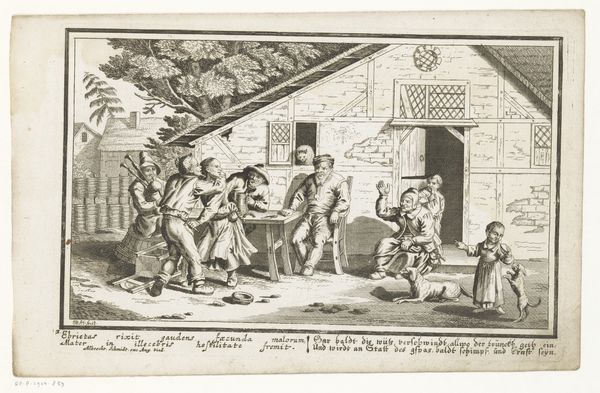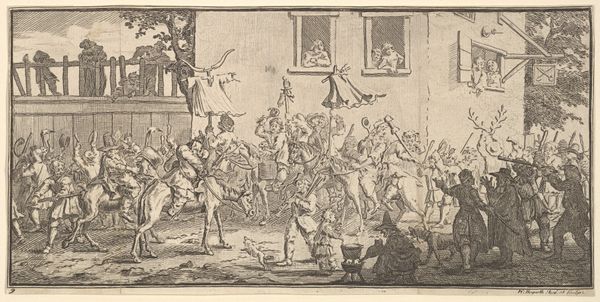
Burning the Rumps at Temple Bar (Twelve Large Illustrations for Samuel Butler's Hudibras, Plate 11) 1725 - 1768
0:00
0:00
drawing, print, etching, engraving, architecture
#
drawing
#
narrative-art
#
baroque
# print
#
etching
#
human-figures
#
figuration
#
arch
#
men
#
cityscape
#
portrait drawing
#
genre-painting
#
history-painting
#
engraving
#
architecture
Dimensions: plate: 10 7/8 x 20 1/4 in. (27.7 x 51.4 cm) sheet: 11 3/4 x 21 1/16 in. (29.8 x 53.5 cm)
Copyright: Public Domain
Curator: Today we're looking at William Hogarth's engraving, "Burning the Rumps at Temple Bar," dating roughly from 1725 to 1768. Editor: It's such a dynamic composition. There's an immediate sense of frenetic energy, chaos almost, rendered with impressive detail despite the clear limitations of the engraving process. Curator: Hogarth really masters the art of visual storytelling here. The balanced composition guides the eye through distinct yet interwoven narrative segments—note the arch, the burning figures, the assembled crowd...it creates an allegorical cityscape that's very specific. Editor: Absolutely. The location itself, Temple Bar, is laden with meaning, marking the historic entry point to the City of London and, in this context, a stage for public spectacle and political commentary. It really draws attention to the material and labor involved in shaping these public spectacles, thinking about who controlled those actions and narratives. Curator: Precisely! Consider how the print medium itself plays into this. As a reproducible image, it democratized access to Hogarth's social critique, circulating his perspective on the political events surrounding the burning of the "rumps"—parliamentarians expelled after the English Civil War. Semiotics are powerful here: The fire symbolizes the act of purification, but the sheer size of the print indicates to me Hogarth saw through the political propaganda. Editor: I agree. The medium also informs its consumption; prints such as this would have been inexpensive and highly circulated. Think about it being tacked to the walls of alehouses as political propaganda consumed with food and drink as it influenced opinions. This easily reproducible format amplifies the socio-political context it engages. Curator: Looking closely at the line work and tonal variations, we see that Hogarth extracted amazing expressive range from the etching technique. I'm seeing incredible levels of skill that bring forth satire of social subjects from the elite. It also gives a glimpse of Hogarth's talent as a moralizing force in art. Editor: Yes. It's fascinating to think about the economics involved, too – the skilled engravers, the paper-making processes, and the distribution networks—each contributing to the work's accessibility. I think it really gives food for thought for later art-making practices during and after the Industrial Revolution. Curator: This engraving shows the high quality of Hogarth's production, allowing a widespread distribution network for such artwork to develop. Editor: I concur completely! It reminds me of the socio-historical significance embedded within art that needs analyzing for broader interpretation.
Comments
No comments
Be the first to comment and join the conversation on the ultimate creative platform.
